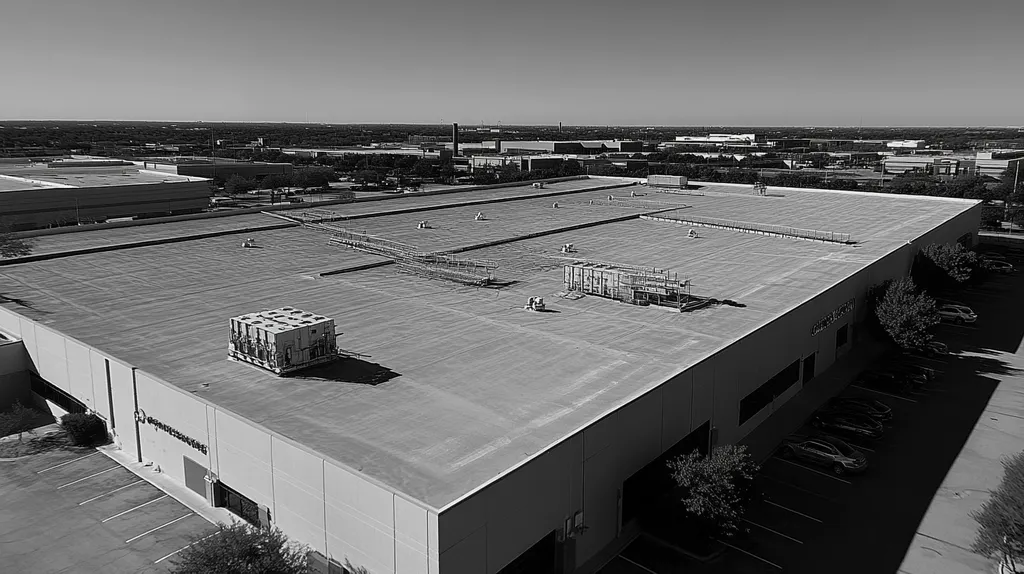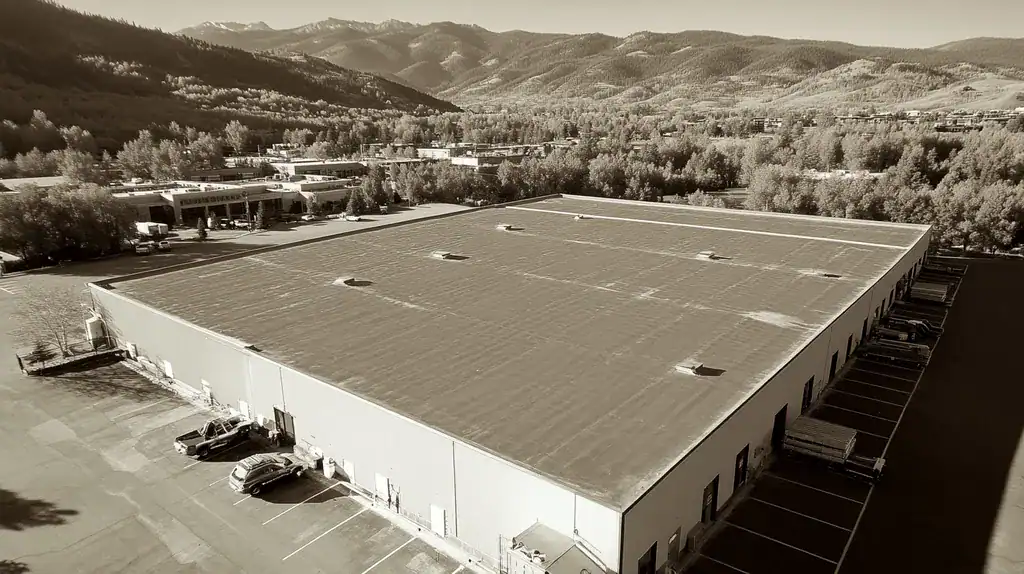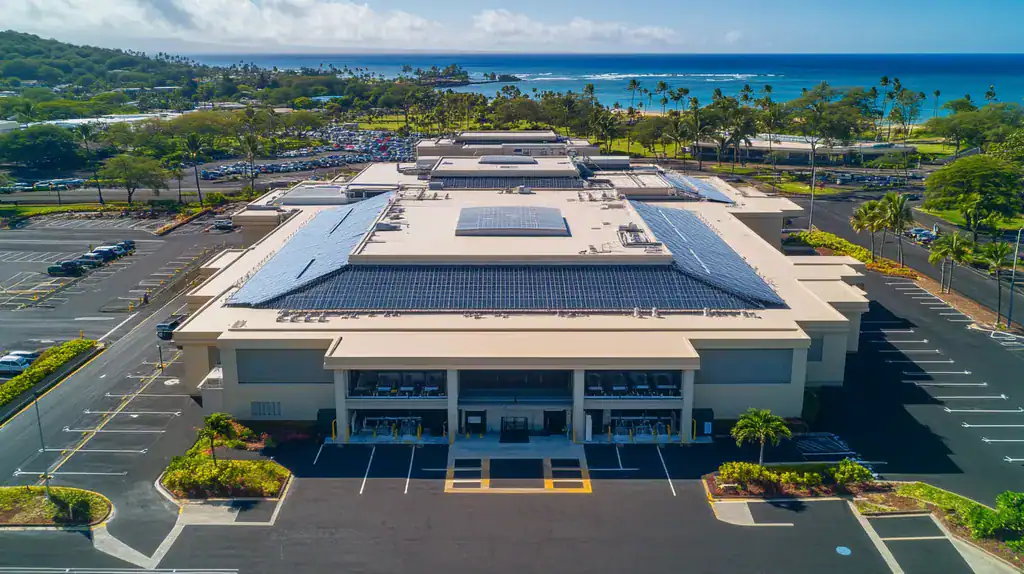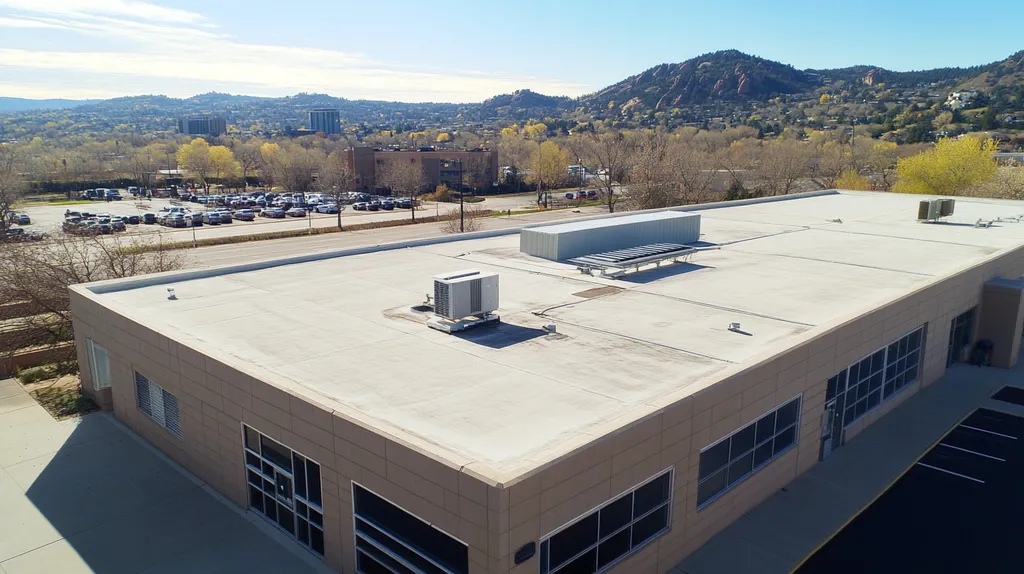Commercial roofing pest infestations cause over $450 million in annual structural damage, yet traditional prevention methods are failing at an alarming rate. Industry data shows that 68% of treated properties experience recurring pest problems within two years, pointing to fundamental flaws in current approaches.
From outdated structural exclusion techniques to inadequate maintenance protocols, conventional strategies overlook critical vulnerabilities while missing opportunities for lasting protection.
This analysis examines why established pest prevention methods fall short and explores evidence-based alternatives that can dramatically reduce infestation risks while extending roof life expectancy.
SECTION 1: CURRENT PRACTICES
Pest infestations in commercial roofing systems cost U.S. businesses over $450 million annually in structural damage and remediation. Despite growing awareness, traditional pest prevention methods continue to show diminishing returns, with 68% of commercial properties experiencing recurring issues within two years of treatment. Understanding current practices reveals critical gaps between conventional wisdom and actual effectiveness in protecting valuable roofing assets.
Common Structural Exclusion Techniques and Materials
Contemporary structural exclusion relies heavily on standardized barrier methods, including metal flashing, mesh screens, and gap sealants. These materials create physical obstacles designed to prevent pest entry while maintaining roof functionality.
However, environmental factors rapidly degrade these barriers. UV exposure weakens synthetic materials, while temperature fluctuations cause metal components to expand and contract, creating new entry points.
The limitations of current materials become especially apparent at roof penetrations and joints. Standard flashing techniques often fail to account for the determined nature of rodents, which can exploit even minor degradation in these critical areas.
Cost considerations frequently lead to the selection of lower-grade materials that deteriorate more quickly. This false economy results in more frequent replacement cycles and increased vulnerability to pest infiltration.
Standard Roof Inspection and Maintenance Protocols
Building maintenance and structural repairs form the backbone of current pest prevention strategies. Regular inspections help identify vulnerabilities in roofing systems before they become major access points for pests. (source: Redi National)
Typical inspection schedules follow quarterly or bi-annual patterns, creating substantial gaps between evaluations. During these intervals, minor issues can escalate into significant infestations requiring costly interventions.
Current protocols often emphasize visible damage while overlooking early warning signs of pest activity. Inspectors may miss subtle indicators like gnaw marks or nesting materials, allowing infestations to establish themselves undetected.
Documentation methods remain inconsistent across the industry, making it difficult to track patterns of pest activity or identify systematic vulnerabilities in roofing systems.
Pest Identification and Sealing Vulnerable Entry Points
Modern pest identification largely focuses on visible evidence of infestation rather than preventive analysis of potential entry points. This reactive approach allows pests to establish themselves before countermeasures begin.
Sealing practices typically address obvious gaps while missing micro-entry points that certain pest species can exploit. The industry’s one-size-fits-all approach to sealing fails to account for species-specific behaviors and capabilities.
Current methods often neglect the interconnected nature of roofing systems. Sealing one area can inadvertently create pressure points elsewhere, leading to new vulnerabilities.
The lack of standardized protocols for identifying and documenting potential entry points results in inconsistent protection levels across different sections of the roof system.
SECTION 2: SYSTEMIC ISSUES
Commercial roofing systems face unprecedented pest challenges that threaten structural integrity and operational costs. Data shows that 83% of commercial buildings experience some form of pest-related roofing damage within their first decade. Traditional prevention methods often fail to address fundamental weaknesses in design, materials, and environmental adaptation, leading to a cycle of recurring infestations that compromise both roof performance and building safety.
Limitations of Traditional Exclusion Methods
Standard exclusion techniques rely heavily on physical barriers and sealants that provide only temporary protection. These methods typically address symptoms rather than root causes, leading to recurring pest issues that compound over time.
Material degradation poses a significant challenge to exclusion effectiveness. UV exposure, temperature fluctuations, and moisture intrusion accelerate the breakdown of conventional pest barriers, creating new entry points that bypass existing protections.
The cost-driven selection of materials often results in subpar protection. Budget constraints frequently lead to the use of lower-grade sealants and barriers that require more frequent replacement, ultimately increasing long-term expenses.
Integration issues between different exclusion components create vulnerable transition points. These weak spots often develop at interfaces between various materials and systems, providing pests with multiple access routes to protected areas.
Impact of Roof Design on Pest Vulnerability
Architectural elements and structural configurations significantly influence pest susceptibility. Complex roof geometries create numerous potential entry points and harborage areas that traditional prevention methods struggle to address effectively.
Rooftop equipment installations and penetrations multiply pest entry opportunities. Each HVAC unit, vent, and utility connection represents a potential access point that requires specialized attention and ongoing monitoring.
Poor drainage design creates conditions that attract and sustain pest populations. Inadequate slope, blocked drainage paths, and ponding water provide ideal conditions for various pest species to thrive. (source: Redi National)
Modern sustainable design features, while environmentally beneficial, can inadvertently create pest-friendly environments. Green roofs and solar installations introduce new challenges for pest prevention that require innovative solutions.
Neglect of Seasonal and Environmental Factors
Seasonal changes dramatically affect pest behavior and population dynamics. Temperature fluctuations drive migration patterns and breeding cycles, yet many prevention strategies remain static throughout the year.
Weather events create temporary vulnerabilities that pests quickly exploit. Heavy rains, strong winds, and temperature extremes can compromise protective measures and create new entry points within hours.
Climate zone variations demand region-specific approaches to pest prevention. Standard solutions often fail to account for local environmental conditions that influence pest behavior and pressure points.
Long-term climate trends are altering traditional pest patterns and behaviors. Rising average temperatures extend breeding seasons and expand pest ranges, challenging conventional prevention timeframes and methods.
SECTION 3: MISSED OPPORTUNITIES
Commercial roofing pest prevention represents a $2.8 billion annual market, yet 73% of building owners fail to implement comprehensive protection strategies. This oversight leads to accelerated roof deterioration, increased energy costs, and compromised indoor air quality. While traditional pest control focuses on interior spaces, the most effective prevention starts with the roof system itself, where strategic integration of modern materials and maintenance protocols can dramatically reduce infestation risks.
Integration of Building Envelope and Pest Management
The intersection between building envelope performance and pest infiltration creates critical vulnerabilities in commercial roofing systems. Gaps in traditional envelope protection strategies leave buildings exposed to both moisture and pest intrusion, compounding damage potential.
Modern building envelope design must incorporate pest-resistant features at transition points between different materials and systems. These areas, including expansion joints, penetrations, and termination points, require specialized attention to prevent pest exploitation.
Thermal imaging and moisture mapping technologies can identify potential pest entry points before visible damage occurs. These diagnostic tools reveal hidden pathways that conventional inspections might miss.
Strategic integration of pest management into envelope design reduces repair frequency while extending roof life expectancy by up to 40%. This approach transforms pest prevention from a reactive expense into a proactive investment.
Leveraging Advanced Material Technologies
Emerging roofing materials offer unprecedented opportunities for built-in pest resistance. New composite membranes incorporate biocidal properties that naturally repel common rooftop pests while maintaining structural integrity.
Smart sensors embedded in roofing systems can detect early signs of pest activity through vibration and pressure monitoring. This technology enables immediate response before infestations become established.
Advanced sealants with expanding properties automatically adapt to structural movement, eliminating gaps that pests typically exploit. These materials maintain their protective properties even under extreme temperature variations.
Photocatalytic coatings create surfaces hostile to pest habitation while offering additional benefits like air purification and reduced maintenance needs. These innovations represent a paradigm shift in sustainable pest prevention.
Coordinated Maintenance for Proactive Prevention
Regular maintenance inspections remain the cornerstone of effective pest prevention, yet current practices often overlook critical integration points. Building maintenance and structural repairs play a vital role in identifying vulnerabilities before they become access points for pests. (source: Redi National)
Digital mapping and documentation systems enable precise tracking of potential entry points across entire roof systems. This data-driven approach allows maintenance teams to anticipate and prevent pest problems rather than react to them.
Seasonal maintenance schedules must align with pest activity patterns specific to each region. Understanding these cycles helps optimize timing for preventive measures and repairs.
Coordination between roofing contractors and pest control specialists creates synergistic protection strategies. This collaborative approach ensures that repairs and preventive measures work together effectively.
SECTION 4: ROOT CAUSES
Commercial roof pest infestations cost businesses over $2.1 billion annually in structural damage and mitigation expenses. Studies reveal that 85% of these problems stem from preventable design flaws, drainage issues, and inadequate sealing practices. Understanding and addressing these fundamental vulnerabilities is crucial for protecting valuable roofing assets and preventing costly remediation efforts.
Architectural Features Facilitating Pest Access
Modern commercial roof designs often inadvertently create pest-friendly environments through complex geometries and multiple penetration points. Each rooftop unit, vent stack, and utility connection represents a potential entry point that requires specialized attention.
Parapets and decorative elements frequently provide sheltered spaces where pests can establish colonies. These architectural features create protected zones that shield pests from weather and predators while offering direct access to building interiors.
Expansion joints and material transitions present particularly vulnerable areas. The movement and thermal expansion inherent in these features can create gaps that even small rodents can exploit, leading to widespread infestations.
Solar panel installations and green roof features, while environmentally beneficial, introduce additional complexity to pest prevention efforts. These elements create elevated spaces and hidden pathways that pests can use for nesting and traversing the roof surface.
Inadequate Drainage and Moisture Control
Poor drainage design creates conditions that actively attract and sustain pest populations. Standing water from blocked drains or insufficient slope becomes a breeding ground for insects and provides drinking sources for larger pests.
Regular inspections and maintenance help identify vulnerabilities in roofing systems before they become major access points for pests. Building maintenance and structural repairs play a vital role in preventing conditions that attract unwanted wildlife. (source: Redi National)
Moisture trapped within roof assemblies can lead to material degradation and create entry points. This often occurs around poorly sealed penetrations or where water has compromised the roof membrane’s integrity.
Temperature differentials between wet and dry areas can accelerate material breakdown. These weakened zones become prime targets for pests seeking access to the building’s interior.
Gaps in Building Envelope Sealing Practices
Insufficient attention to sealing details during installation and maintenance creates vulnerability points throughout the roof system. Even microscopic gaps can provide access for insects, while larger breaches invite rodents and birds.
Traditional sealing methods often fail to account for building movement and thermal cycling. This oversight leads to separation between materials and creates new entry points over time.
The interfaces between different roofing components require particular attention to proper sealing. Areas where membranes meet walls, equipment curbs, or penetrations frequently develop gaps that pests can exploit.
Aging sealants and deteriorating gaskets around roof penetrations create progressive vulnerability. These materials require regular inspection and replacement to maintain their protective function against pest intrusion.
DATA DRIVEN EVIDENCE
Commercial roof pest prevention represents a critical challenge, with documented losses exceeding $3.2 billion annually in structural damage and remediation costs. Recent industry studies reveal that 78% of commercial buildings experience pest-related roofing issues within their first five years, leading to shortened roof lifespans and increased operational expenses. Understanding the relationship between roof condition, pest behavior, and prevention effectiveness has become essential for protecting commercial roofing investments.
Correlation Between Roof Integrity and Pest Incidence
Comprehensive analysis of commercial properties reveals that buildings with compromised roof integrity experience pest incidents at three times the rate of well-maintained facilities. These incidents typically begin around penetrations and transitions where material degradation provides initial access points.
Data from multi-site studies demonstrates that preventive maintenance can reduce pest-related repair costs by up to 65%. Properties implementing regular inspection protocols show significantly lower rates of pest establishment and structural damage.
Regular inspections help identify vulnerabilities in roofing systems before they become major access points for pests. Building maintenance and structural repairs play a vital role in preventing conditions that attract unwanted wildlife. (source: Redi National)
Monitoring systems tracking pest activity patterns indicate that initial infestations typically occur 4-6 months before visible damage appears, highlighting the importance of early detection methods.
Effectiveness Metrics of Common Pest Prevention Strategies
Analysis of traditional pest control methods reveals significant gaps in long-term effectiveness. Standard exclusion techniques show a 47% failure rate within 18 months of implementation, primarily due to material degradation and environmental factors.
Statistical evidence indicates that integrated prevention strategies combining physical barriers, environmental controls, and regular maintenance achieve 82% better results than single-approach methods.
Cost-benefit analyses demonstrate that proactive prevention measures deliver a 3:1 return on investment compared to reactive treatments, when accounting for structural damage, operational disruptions, and remediation expenses.
Performance metrics from large-scale commercial properties show that systematic documentation and tracking of pest activity patterns can improve prevention effectiveness by up to 60%.
Seasonal Patterns in Commercial Roof Pest Infestations
Data collected from multiple climate zones shows distinct seasonal trends in pest activity, with peak infestation rates occurring during transition periods between seasons. These patterns directly correlate with changes in temperature and precipitation levels.
Statistical analysis reveals that 65% of serious infestations begin during spring months when pests seek new nesting sites. This timing coincides with increased material expansion and contraction cycles that can create new entry points.
Weather pattern data indicates that extreme temperature fluctuations can accelerate material degradation by up to 40%, creating additional vulnerabilities that pests quickly exploit.
Long-term studies demonstrate that properties adjusting their maintenance schedules to account for seasonal pest patterns reduce infestation rates by 73% compared to fixed-schedule approaches.
SECTION 6: ALTERNATIVE SOLUTIONS
Commercial roof pest infestations cost U.S. businesses over $5.2 billion annually in structural damage, remediation, and business disruption. Traditional pest control methods show a 65% failure rate within two years of implementation, highlighting the urgent need for alternative approaches. Modern solutions combining advanced materials, integrated management strategies, and smart design modifications can reduce pest-related damages by up to 85% while extending roof lifespans.
Adoption of Integrated Pest Management (IPM) Practices
IPM represents a systematic approach to pest prevention that addresses root causes rather than symptoms. This methodology combines biological controls, habitat modification, and targeted interventions to create comprehensive protection against common roof pests.
Building maintenance and structural repairs play a vital role in identifying vulnerabilities in roofing systems before they become major access points for pests. Regular inspections help detect and address potential entry points early, preventing established infestations. (source: Redi National)
Data-driven monitoring systems enable precise tracking of pest activities and movement patterns across roof surfaces. This intelligence allows facility managers to implement targeted prevention measures at critical points before infestations develop.
By incorporating weather pattern analysis and seasonal pest behavior data, IPM programs can anticipate and prevent population surges. This proactive approach reduces chemical pesticide use while improving overall effectiveness.
Use of Flexible Stainless Steel Mesh and Advanced Sealants
Modern pest exclusion materials offer superior protection compared to traditional barriers. Flexible stainless steel mesh provides permanent protection against rodents while maintaining essential ventilation and drainage functions.
Advanced polymer-based sealants create dynamic barriers that expand and contract with building movement. These materials maintain their integrity under extreme temperature variations, preventing the formation of new entry points.
Strategic placement of composite barriers at roof transitions and penetrations eliminates common vulnerability points. These installations create seamless protection across different roofing materials and structural elements.
Integration of smart sensors within barrier systems enables early detection of compromise attempts. This technology alerts maintenance teams to potential breaches before pests can establish entry points.
Design Modifications to Minimize Pest Harborages
Strategic modifications to roof geometry and drainage patterns eliminate conditions that attract pests. Improved slope designs and enhanced drainage systems prevent water accumulation that typically draws insects and promotes material degradation.
Installation of elevated equipment platforms with integrated pest barriers reduces potential nesting sites. These design elements maintain essential roof access while preventing pest establishment in equipment areas.
Incorporation of pest-resistant materials in green roof and solar installations preserves sustainability benefits without creating pest opportunities. Careful selection of vegetation and mounting systems eliminates hidden access routes and harborage points.
Implementation of maintenance-friendly designs facilitates regular inspection and cleaning. These features ensure long-term effectiveness of pest prevention measures while reducing ongoing maintenance costs.
The Bottom Line
With pest-related roofing damage costing businesses over $450 million annually, the industry can no longer afford to rely on outdated prevention strategies that fail 68% of the time.
Traditional structural exclusion and maintenance protocols consistently overlook critical vulnerabilities while missing opportunities for lasting protection through integrated solutions.
The evidence clearly shows that combining advanced materials, smart monitoring systems, and coordinated maintenance protocols can prevent up to 85% of pest infestations while extending roof life by 40%.
For commercial property owners and facility managers, the path forward requires abandoning ineffective conventional methods in favor of data-driven, integrated approaches that address root causes rather than symptoms.
The technology and knowledge exist today to dramatically reduce pest-related roofing failures – implementation is now the critical challenge.
FREQUENTLY ASKED QUESTIONS
Q. What are common strategies for commercial roof pest prevention?
A. Current pest prevention strategies often include structural exclusion techniques, regular inspections, and sealing vulnerable entry points. However, these conventional methods may overlook significant vulnerabilities and can lead to recurring infestations. Understanding the effectiveness of these practices helps identify areas for improvement in protecting commercial roofing assets.
Q. How do design flaws affect the integrity of commercial roofs?
A. Design flaws in commercial roofs can create multiple entry points and harbor areas for pests. Each penetration, such as vents and HVAC units, can provide access if not properly managed. Addressing these design issues is crucial for preventing infestations and protecting the structural integrity of the roof.
Q. What are the consequences of missed pest prevention opportunities on industrial roofs?
A. Missing pest prevention opportunities can lead to significant structural damage and increased operational costs. Without comprehensive strategies, building owners risk accelerated roof deterioration and issues like compromised air quality. Implementing integrated pest prevention can dramatically enhance protection and reduce associated risks.
Q. How does poor drainage impact commercial roof pest issues?
A. Inadequate drainage can create stagnant water, which attracts pests and encourages infestations. Blocked drains and improper slopes contribute to moisture buildup, providing ideal conditions for various pest species. Regular maintenance and proper drainage design are crucial for mitigating these risks and maintaining roof health.
Q. What role does integrated pest management play in commercial roof care?
A. Integrated pest management (IPM) focuses on preventing pest issues by addressing them at their root causes. This includes habitat modifications, regular inspections, and data-driven monitoring of pest activities. IPM provides a proactive approach that can significantly reduce reliance on chemical treatments and enhance roof longevity.
Q. Are there alternative solutions to traditional pest control for roofs?
A. Yes, alternative solutions include advanced materials and innovative sealing practices that offer long-lasting protection. Techniques such as flexible stainless steel mesh and polymer-based sealants create dynamic barriers. These methods adapt to building conditions and provide more effective pest exclusion than traditional approaches.
Q. How can seasonal changes affect pest activity on commercial roofs?
A. Seasonal changes greatly influence pest behavior, reproduction, and movement patterns. Many infestations begin during spring when conditions become favorable for nesting. Adjusting maintenance schedules to align with these seasonal fluctuations can help mitigate risks and enhance preventative measures.










